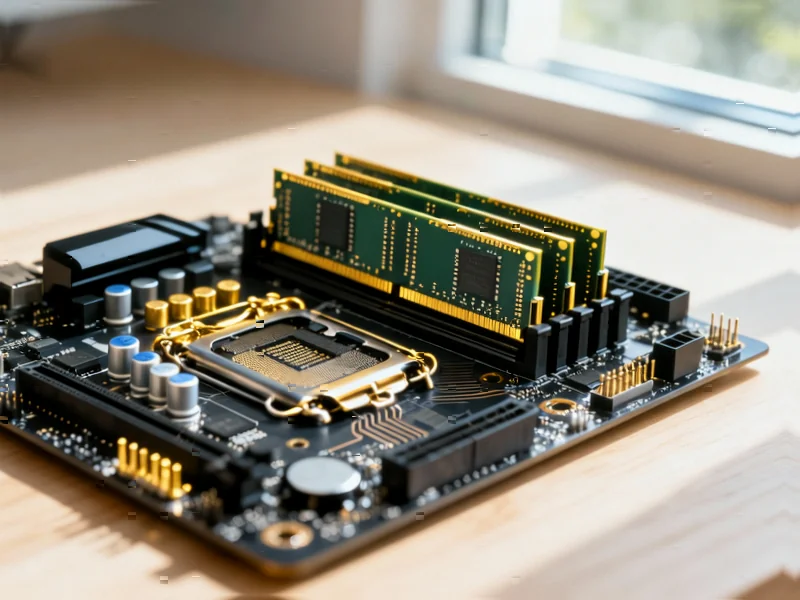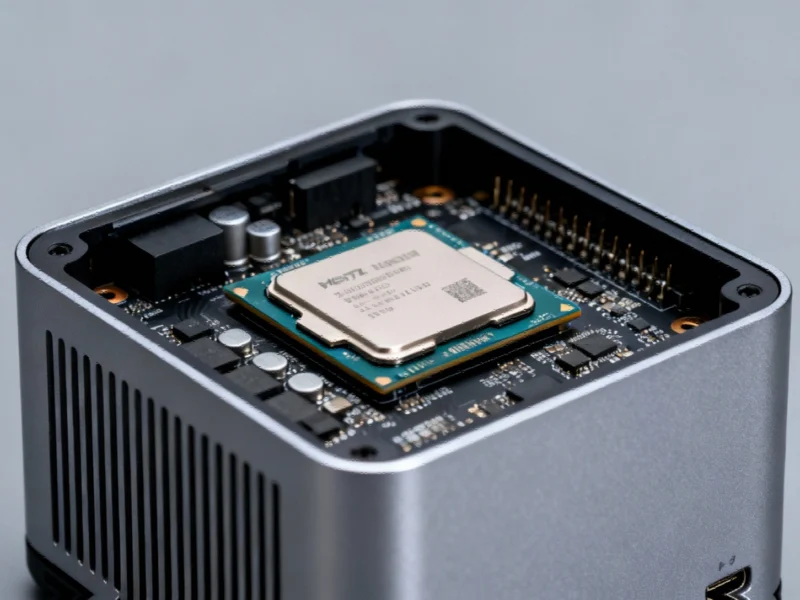According to Wccftech, Chinese hardware manufacturer Colorful has introduced two new memory optimization features called “Low Latency” and “High Performance” modes for its AM5 motherboards, specifically targeting Ryzen 9000 series CPUs. The company claims these BIOS-level optimizations can reduce memory latency by 12 nanoseconds while maintaining 6000 MT/s memory speeds, resulting in 5 GB/s higher read speeds and 4.5 GB/s higher write speeds in AIDA64 benchmarks. In gaming tests, Colorful’s internal data shows Battlefield 6 performance jumping from 146 FPS to 172 FPS, representing a 15% improvement. The features are available on select 800-series motherboards including the Tomahawk B850M Super Black Blade and Colorfire B850M Meow, with broader support coming to X870, B850, and B650 chipsets via BIOS updates. While these numbers appear impressive, they require independent verification before gamers can trust the real-world benefits.
Table of Contents
The Memory Latency Challenge in Modern Gaming
Memory latency represents one of the most persistent bottlenecks in modern computing, particularly in gaming where rapid data access directly impacts frame rates and responsiveness. While memory latency has improved over generations, it remains a critical factor that separates theoretical bandwidth from actual performance. The challenge is especially pronounced with AMD’s Ryzen architecture, which relies heavily on fast memory access due to its chiplet design and Infinity Fabric interconnect. What makes Colorful’s approach interesting is their focus on optimizing this specific weakness through BIOS-level tuning rather than relying solely on faster memory hardware.
The Credibility Gap in Manufacturer Benchmarks
Colorful’s performance claims immediately raise questions about testing methodology and real-world applicability. Manufacturer-conducted benchmarks often use ideal conditions that may not reflect typical gaming scenarios. The 15% improvement in Battlefield 6 specifically raises eyebrows—this represents an unusually large gain from memory optimization alone, especially considering the game isn’t even released yet. Historically, memory optimizations typically yield single-digit percentage improvements in most titles, making these results either revolutionary or potentially overstated. The gaming community has learned to be skeptical of such claims after numerous instances where manufacturer-touted features failed to deliver meaningful improvements in independent testing.
Broader Industry Implications
If Colorful’s claims hold up under third-party scrutiny, this could represent a significant shift in how motherboard manufacturers differentiate their products. Rather than competing solely on component quality and feature sets, we might see increased focus on proprietary performance optimizations at the motherboard firmware level. This approach mirrors what we’ve seen in the GPU space, where manufacturers like ASUS and MSI develop their own software enhancements. However, it also raises concerns about platform fragmentation and compatibility issues, particularly for users who mix components from different manufacturers. The success of these features could pressure other motherboard makers to develop similar proprietary optimizations, potentially creating a new competitive battleground.
Practical Considerations for Gamers
The implementation details reveal both opportunities and concerns for end users. Requiring users to navigate multiple BIOS menus and select specific presets creates accessibility barriers for less technical gamers. More importantly, aggressive memory timing optimizations can sometimes lead to system instability, particularly when combined with other overclocking settings. Gamers should approach these features with caution, understanding that manufacturer-tested configurations may not work perfectly with their specific memory kits or other system components. The fact that these optimizations work within existing JEDEC and EXPO specifications is promising, but real-world stability will ultimately determine their value proposition.
The Critical Need for Independent Verification
Until third-party reviewers and technical publications validate Colorful’s claims with rigorous testing across multiple games and system configurations, these performance improvements remain theoretical. The gaming hardware industry has a mixed track record with manufacturer performance claims, particularly when they involve unreleased software like Battlefield 6. What’s needed now is comprehensive testing from trusted sources like Gamers Nexus, Hardware Unboxed, or TechSpot using standardized methodologies across various memory configurations and competing motherboard brands. Only through such independent analysis can we determine whether Colorful has genuinely cracked the code on memory optimization or simply optimized their testing conditions.
Market Impact and Future Developments
If proven effective, Colorful’s approach could significantly impact the value proposition of their motherboards in the competitive AM5 market. With Ryzen 9000 series processors emphasizing memory performance as a key differentiator, motherboard-level optimizations that genuinely improve gaming performance could become a major selling point. However, the long-term success of such features depends on consistent performance across game engines and future processor generations. We may also see AMD responding with their own official memory optimization standards, potentially making proprietary solutions like Colorful’s obsolete if similar performance gains become available through standard platform features.



